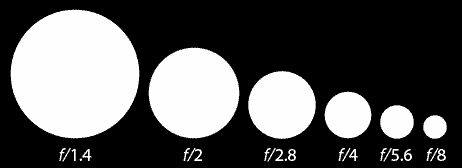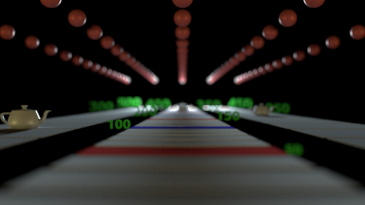Contents
Aperture: The aperture of a camera limits the amount of light that can reach the image plane (the film in a roll film camera or the sensor in digital cameras). Each position for the aperture is called a “stop” or f-stop. In a physical camera, the aperture works in conjunction with the shutter speed to determine the film's exposure. To maintain a constant exposure level, a faster shutter speed requires a larger aperture size to compensate for the loss of light due the increased shutter speed. Conversely, a slower shutter speed requires a smaller aperture to avoid over-exposing the film.
A side effect of changing the aperture size is that the depth of field changes. Depth of field describes the finite range of focus that a camera can produce because of the way light focuses through the aperture. A pinhole camera has a nearly infinite depth of field, while a camera with a large aperture (small f-stop) has a narrow depth of field. Reducing the size of your aperture (smaller apertures correspond to bigger f-stop numbers) increases the depth of field, making objects further away from the focal point appear in focus. Each f-stop represents a halving of the light intensity from the previous stop.
RenderMan's camera projection can use a specified fstop, focallength, and focaldistance to create the illusion of depth of field or realistic cinematographic effects. These values are specified in scene units. The focal distance is the distance through the center of projection to the plane of focus. The ratio of the focal length to the fstop determines the size of the lens aperture (and therefore the amount of blur), while the relation between the focal distance and the focal length determines the depth of field. The image below was rendered using camera settings of 1.0 for the fstop, 100for the focaldistance, and 1.3 for the focallength.
fstop = 1.0, focalDistance = 100, focalLength = 1.3



